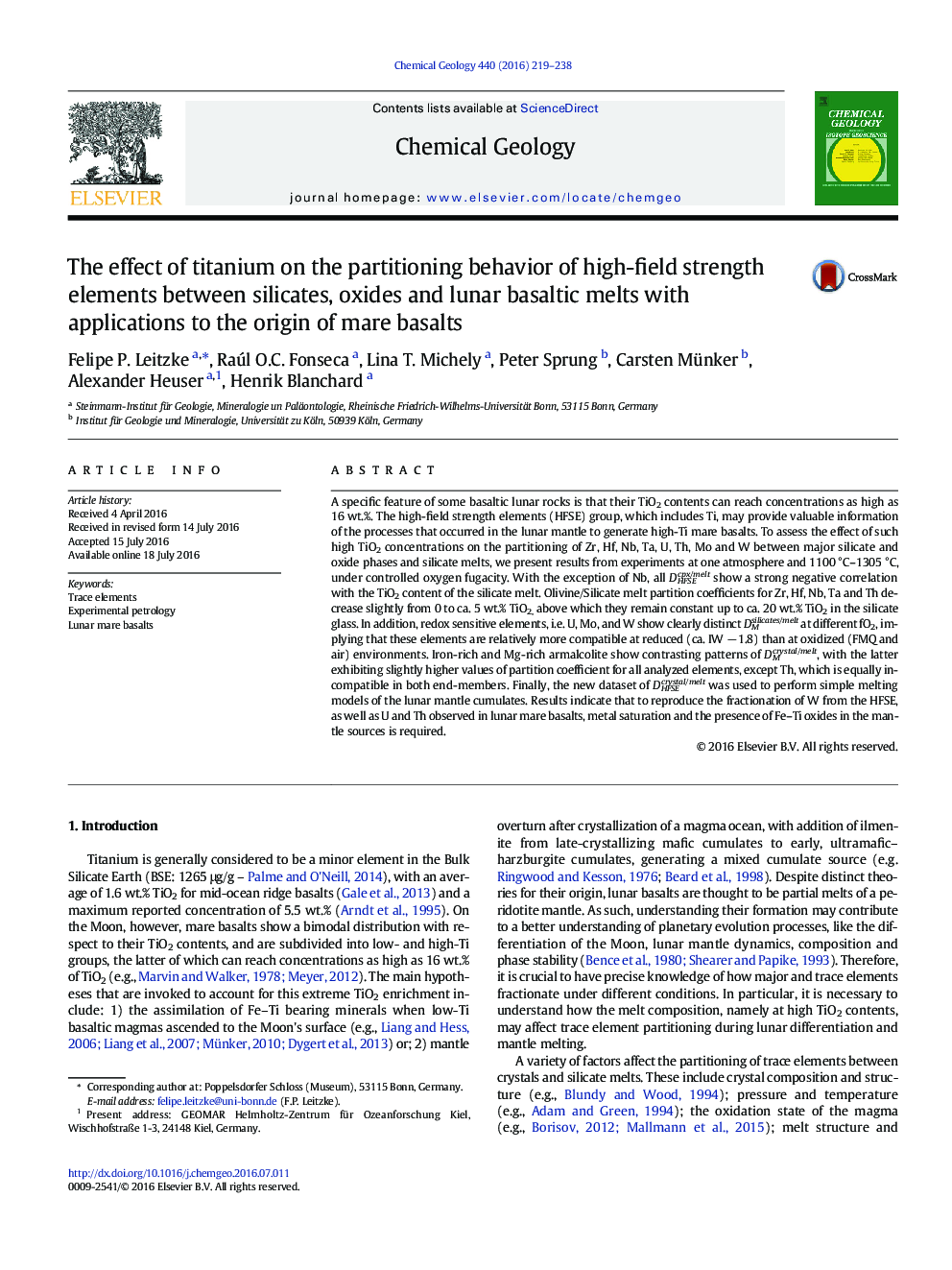| کد مقاله | کد نشریه | سال انتشار | مقاله انگلیسی | نسخه تمام متن |
|---|---|---|---|---|
| 6436037 | 1637534 | 2016 | 20 صفحه PDF | دانلود رایگان |
- DHFSEcrystal/melt were calculated from experiments with 0 to 20Â wt.% melt TiO2.
- At ca. IW â 1.6 generally higher values of DMcrystal/melt for Mo, W and U are found.
- Using the new data, fractional melting models of the lunar mantle were performed.
- Metal and Fe-Ti oxides are need at source to match observed high-Ti basalts trends.
A specific feature of some basaltic lunar rocks is that their TiO2 contents can reach concentrations as high as 16 wt.%. The high-field strength elements (HFSE) group, which includes Ti, may provide valuable information of the processes that occurred in the lunar mantle to generate high-Ti mare basalts. To assess the effect of such high TiO2 concentrations on the partitioning of Zr, Hf, Nb, Ta, U, Th, Mo and W between major silicate and oxide phases and silicate melts, we present results from experiments at one atmosphere and 1100 °C-1305 °C, under controlled oxygen fugacity. With the exception of Nb, all DHFSEcpx/melt show a strong negative correlation with the TiO2 content of the silicate melt. Olivine/Silicate melt partition coefficients for Zr, Hf, Nb, Ta and Th decrease slightly from 0 to ca. 5 wt.% TiO2, above which they remain constant up to ca. 20 wt.% TiO2 in the silicate glass. In addition, redox sensitive elements, i.e. U, Mo, and W show clearly distinct DMsilicates/melt at different fO2, implying that these elements are relatively more compatible at reduced (ca. IW â 1.8) than at oxidized (FMQ and air) environments. Iron-rich and Mg-rich armalcolite show contrasting patterns of DMcrystal/melt, with the latter exhibiting slightly higher values of partition coefficient for all analyzed elements, except Th, which is equally incompatible in both end-members. Finally, the new dataset of DHFSEcrystal/melt was used to perform simple melting models of the lunar mantle cumulates. Results indicate that to reproduce the fractionation of W from the HFSE, as well as U and Th observed in lunar mare basalts, metal saturation and the presence of Fe-Ti oxides in the mantle sources is required.
Journal: Chemical Geology - Volume 440, 15 November 2016, Pages 219-238
